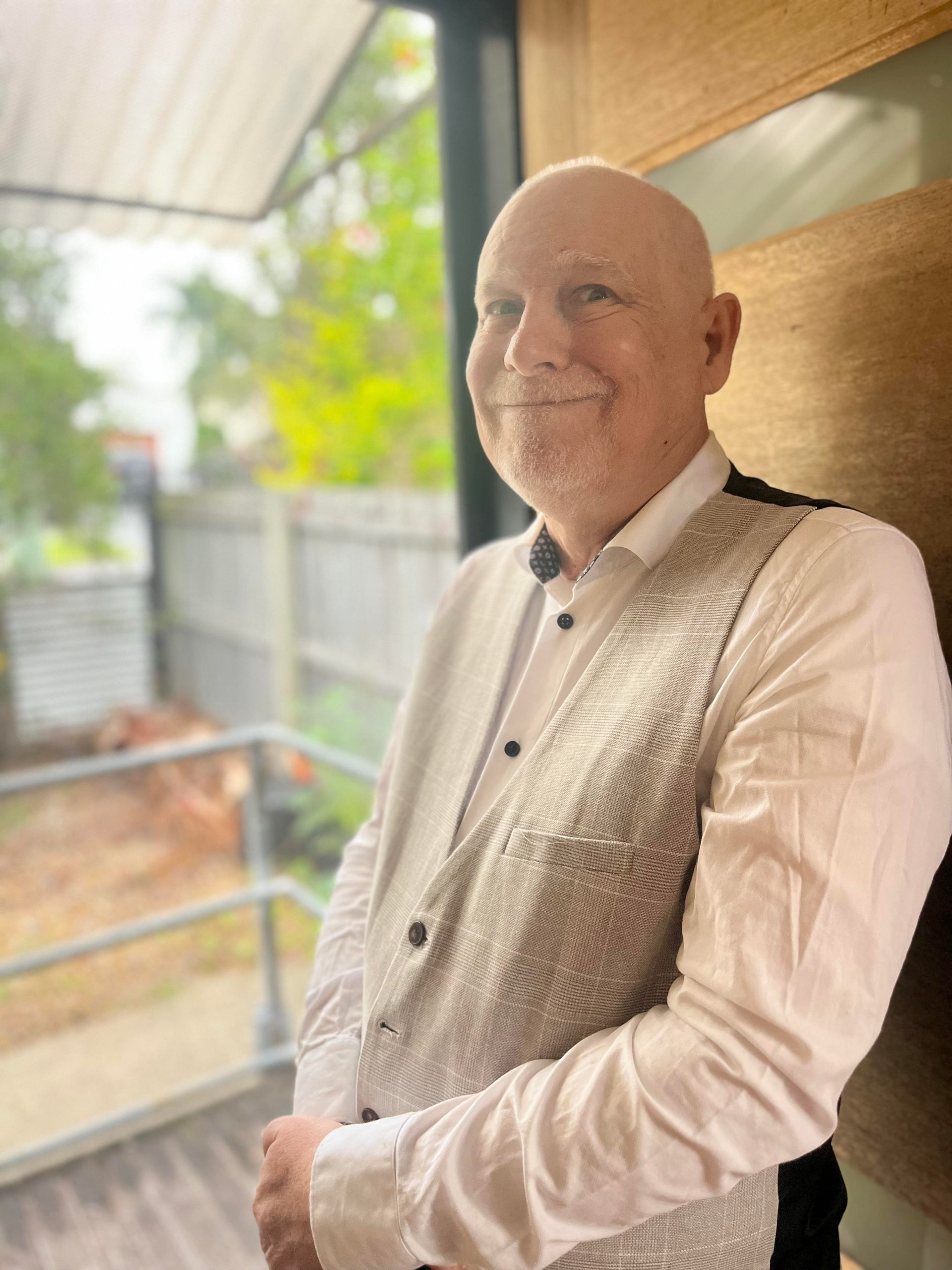
by Neville Buch | Aug 9, 2024 | Concepts in Public History for Marketplace Dialogue
A significant slice on the global history of sociology, philosophy, and historiography has been around discussions of Micro and Macro scopings, and Thin and Thick concepts, with the best scholars examining what Randall Collins calls, “interaction ritual” (IR). The sociological concept was first introduced in Interaction Ritual: Essays on Face-to-Face Behavior, a 1967 book by Erving Goffman. The concepts are slightly different between Collins and Goffman but the concepts are mutually supportive. In the first essay, “On Face-work”, Goffman discusses the concept of face, which is the positive self-image a person holds when interacting with others, and Goffman believes that face “as a sociological construct of interaction is neither inherent in nor a permanent aspect of the person”. Reinhard Bendix‘s work State and Society (1973) enabled Collins to later combine this theory with Erving Goffman’s microsociology, which resulted in Collins’ publication Conflict Sociology in 1975 and later, Interaction Ritual Chains in 2004. Goffman was also one of Collins’ professors during his time at Berkeley. Collins’ identifies interaction ritual more in terms of cognition links in schools of thought.
Randall Collins has always been interested in what he calls a “non-obvious” sociology (1982). A nonobvious sociology is one that reveals the hidden processes behind what is taken for granted and that demonstrates why the obvious questions are not necessarily the most central ones. [page 92]
Sociologies of other disciplines tend to strike readers, especially those in the targeted field, as attempts to expand the jurisdiction of sociology and to fulfill Comte’s dream of making sociology the ultimate explanatory foundation for all intellectual pursuits. Although we see some of this in Collins, his primary goal in this latest work is not to sociologically explain away philosophical truths. Instead Collins intends to use the history of philosophy to test his ideas about the relationship between concrete human interactions and social structures-that is, the relation between what have come to be called the micro and the macro. [page 92]
Whether the details of the work are ultimately convincing is beyond the scope of this article, but no reader can be unimpressed by the geographic breadth and depth of Collins’s attempt. Following the overview of the theory is a discussion both of what I find unconvincing in the micro theory and also of what I feel are Collins’s new contributions to the sociology of knowledge. Finally, I will suggest what sociology of knowledge might say about sociological theory itself [page 93; my emphasis on the author’s thinking]
Collins’s view of the micro-macro relation is inspired by the empirical achievements such microsociological approaches as ethnomethodology and conversational analysis. These microsociologies do not wholly reject macrosociological concepts, but they improve on their explanations by reconstituting macroconcepts on radically empirical foundations. Whether structures change or persist depends entirely upon whether lying microbehaviors change or persist (Collin 1981: 989). Collins often describes structures as simple aggregates of microevents and has suggested a rather dubious sampling strategy that would ignore all traditional macrosociological variables (Collins 1981:988). [page 94]
Collins’s sociology combines a micro theory of emotional solidarity with a macro theory based on conflict. Collins believes that the same processes that produce solidarity on the micro level produce conflict on the macro. The cultural capital, emotional energy, and group solidarities produced in IRs [interaction rituals] allow individuals to dominate hierarchies and encourage groups to engage in concerted conflict. IRs are both a site where domination is practiced and a supplier of the major weapons used in social conflict. [page 95]
[Goodman’s key criticism] his theory lacks the prime advantage that Collins sees in a micro approach, its openness to empirical testing. Increases in emotional energy are no more observable than any of the macrostructures that Collins labels as nonempirical abstractions. In an articles Collins (1990b:50) admits as much. “My argument, that EE [emotional energy] declines over a series of interaction rituals depending upon the ups and experiences of power and status, is inferential. There is little direct evidence for it.” [page 97]
Goodman’s criticism of Collins’ paradigm fails because it is on any reasonable reading a non-acceptance of nonempirical abstractions, and, as such, it is prejudice, a rationally-argued anti-intellectualism among academics. Philosophical principles (including ethics) are generally nonempirical abstractions; even consequentialist theories has to start in the metaphysics to prioritise natural values. A non-acceptance of nonempirical abstractions blanketly rejects all other theory for theoretical pragmaticism; that is, trapped and stuck thinking.
Nevertheless, as cited by Goodman it can be seen what is valuable. So, Collins does “not to sociologically explain away philosophical truths. Instead Collins intends to use the history of philosophy to test his ideas about the relationship between concrete human interactions and social structures-that is, the relation between what have come to be called the micro and the macro.” Amongst the preservation of that methodology of ‘philosophical truths’ are the meta-reflective conceptions of ‘thin concepts’ and ‘thick concepts’. The terms come from the fields of metaphilosophy and ethics, metaethics:
Yet another way of categorizing metaethical theories is to distinguish between centralist and non-centralist moral theories. The debate between centralism and non-centralism revolves around the relationship between the so-called “thin” and “thick” concepts of morality: thin moral concepts are those such as good, bad, right, and wrong; thick moral concepts are those such as courageous, inequitable, just, or dishonest. While both sides agree that the thin concepts are more general and the thick more specific, centralists hold that the thin concepts are antecedent to the thick ones and that the latter are therefore dependent on the former. That is, centralists argue that one must understand words like “right” and “ought” before understanding words like “just” and “unkind.” Non-centralism rejects this view, holding that thin and thick concepts are on par with one another and even that the thick concepts are a sufficient starting point for understanding the thin ones. (
Wikipedia).
A number of other psychological theories may also shed light on behaviour in the political context of avoiding understanding human factors, such as cost-benefit , and free-choice . What strikes me in the debates are several observations:
- People actively avoid situations and information likely to increase cognitive dissonance – the discomfort from holding contradictory beliefs, ideas, or values, or dealing with new information that conflicts with existing beliefs, ideas, or .
- People do not think much about their attitudes, let alone whether they are in conflict. They can come to conclusions as observers without much (or no) emotional or intellectual (cognitive)
Nevertheless, in spite of an over-emphasis in rational process or agency, there are basic elements in reasoning and choice which ought not to be ignored. Ideas on action and motivation may also provide some illumination. We continue to make ethical judgements. We can identify a person’s motivation as malice, intellectual laziness, or just plain ignorance. These are what Bernard Williams called thick concepts – the way we, at the same time, combine our valuation and facts of the matter in . We see it in others because we think and feel in the same way. It is an inescapable part of our socialization. It is also a fact about how the brain is “wired”. The big mistake of the ancients, and which we continue in modernity, is to emphasize the difference between emotion and reason.
In current discussions today on democracy, the biggest threat is the thin concept of “We the People”, and the solution is the thick concept of “We the Persons”. If you ask the question, who are people it is easy to see it is a thin concept, as the explanation goes not further than a category. If you ask the question, who are the persons it is easy to see it is a thick concept, since the question leads into the scholarship of personalism. What we get today are the thin concepts of the political rhetoric, signs without substance but which infer hidden or undisclosed beliefs. The advantage of thick concepts is that this political rhetoric has greater clarity. Now, as I argued in my past essay, The Level Playing Field:
Every idea, word, term has a fit, in that we can measure some meaningful signal from when a person uses an idea, word, or term to explain their own beliefs. It has become fashionable in all quarters to nastily dismiss a proposition where someone is attempting to explain an idea, word, or term, and this is to deny any meaningful content in the thinking offer. This is absolute cynicism and should not be accepted in society, but provided as the meaning of a moronic thinking, and not to be hypocritical, each must admit that, to some measure, it is performed by each person sometime past. It is an emotional reaction of human development and society agrees it is a stage of immaturity; although most of us keep falling intermittently for this emotional trap.
All of the terms and concepts in this article has a fit to, not one, but to several overlapping schemas. Furthermore, there are many more sociological terms and concepts which can also be identified (many thanks to Neil Peach for the list; Szakolczai 2023):
- Liminality: 1. occupying a position at, or on both sides of, a boundary or threshold. 2. relating to a transitional or initial stage of a process. (Oxford)
- Trickster: a person who cheats or deceives people. (Oxford)
- Imitation: 1. the action of using someone or something as a model. 2. a thing intended to simulate or copy something else. (Oxford)
- Schismogensis: Schismogenesis is a term in anthropology that describes the formation of social divisions and differentiation. Literally meaning “creation of division”, the term derives from the Greek words σχίσμα skhisma “cleft” (borrowed into English as schism, “division into opposing factions”), and γένεσις genesis “generation, creation” (deriving in turn from gignesthai “be born or produced, creation, a coming into being”). The term was introduced by anthropologist Gregory Bateson and has been applied to various fields. (Wikipedia)
- (Total) Participation: the action of taking part in something. (Oxford)
Taken all together, what this article is arguing, as a summative statement, is that true learning are three metaethical concepts, which align together, and with all other terms and concepts mentioned in the article:
- (true) Open Access: the unrestricted right or opportunity to use or benefit from something, in particular academic writing or research. (Oxford)
- Open Participation: Open Participation. Means that anyone may attend a Committee meeting and have the opportunity to offer an opinion on the subject of the meeting, or otherwise participate as a member of the advisory group. (Law Insider)
- Open and Level Playing Field: A level playing field is simply a fair way to compare or judge two things. (Britannica)
The full argument is a forthcoming essay. But the ‘thisness,’ here (Haecceity), is a start to a critical thinking conversation.
BIBLIOGRAPHY
Berlin, Isaiah (with Bernard Williams) ‘Pluralism and Liberalism: A Reply’ (to George Crowder, ‘Pluralism and Liberalism’, Political Studies 42 (1994), 293–303), Political Studies 42 (1994), 306–9
Berlin, Isaiah (1958). Two Concepts of Liberty, Lecture, at the University of Oxford on 31 October 1958.
Collins, Randall (1998). The Sociology of Philosophies: A Global Theory of Intellectual Change, Harvard Unversity Press.
Collins, Randall (1999). Macrohistory : essays in sociology of the long run. Stanford University Press, Stanford, Calif
Collins, Randall (2005). Interaction ritual chains. Princeton University Press, Princeton, N.J. ; Oxford
Collins, Randall (2008). Violence A Micro-sociological Theory, Princeton University Press
Collins, Randall (2019). The Credential Society: An Historical Sociology of Education and Stratification, Columbia University Press.
Goodman, Douglas (2001). What Collins’s The Sociology of Philosophies Says about Sociological Theory. Sociological Theory (American Sociological Association), Vol. 19, No. 1 (Mar., 2001), pp. 92-101.
Macklin, Michael (1972). To Deschool Society, Cold Comfort, December 1972.
Macklin, Michael (1975). Those Misconceptions are not Illich’s, Educational Theory, 25 (3), 323-329
Macklin, Michael (1976). When Schools are Gone: A Projection of the Thought of Ivan Illich, St. Lucia: University of Queensland Press.
Macklin, Michael (1986). Education in and for a Multicultural Australia, Australian Teachers Federation Conference, Sydney, October 1986.
Peach, Neil (2005). Academic planning and strategic planning: strangers in the night or potent weapons for strategic competitive advantage?Academia.edu .
Peach, Neil (2009). Planning for a sustainable academic future. Academia. edu .
Peach, Neil (2019). Individualised learning approach (the three ‘p’s) for a small to medium enterprise through work based learning, Academia.edu .
Szakolczai, Arpad (2023). Political Anthropology as Method. Routledge (pages 195 – 204).
Williams, Bernard (1981). Moral Luck, Cambridge: Cambridge University Press.
Williams, Bernard (1985). Ethics and the Limits of Philosophy, London: Fontana.
Williams, Bernard (1995). Making Sense of Humanity, Cambridge: Cambridge University Press.
Williams, Bernard (1995). World, Mind, and Ethics: Essays on the ethical philosophy of Bernard Williams, J.E.J.Altham and Ross Harrison (eds.), with “Replies” by Bernard Williams. Cambridge: Cambridge University Press.
Williams, Bernard (2002). Why Philosophy Needs History, London Review of Books, October 17, 7–9.
Williams, Bernard (2002): Truth and Truthfulness: An Essay in Genealogy, Princeton: Princeton University Press.
Williams, Bernard (2005). Philosophy as a Humanistic Discipline, Princeton: Princeton University Press.
Williams, Bernard (2005). The Sense of the Past: Essays on the History of Philosophy, Cambridge: Cambridge University Press,
Williams, Bernard, ‘Berlin, Isaiah (1909–97)’, in Routledge Encyclopaedia of Philosophy (London and New York, 1998: Routledge), vol. 1, 750–3
Featured Image: Get off the public path. Choose an alternative way. Thinking outside the box. Atypical leadership thinking qualities. Conformism denial. Detachment. Search for new opportunities. Over the border. Photo 247705837 | Public Thinking © Andrii Yalanskyi | Dreamstime.com

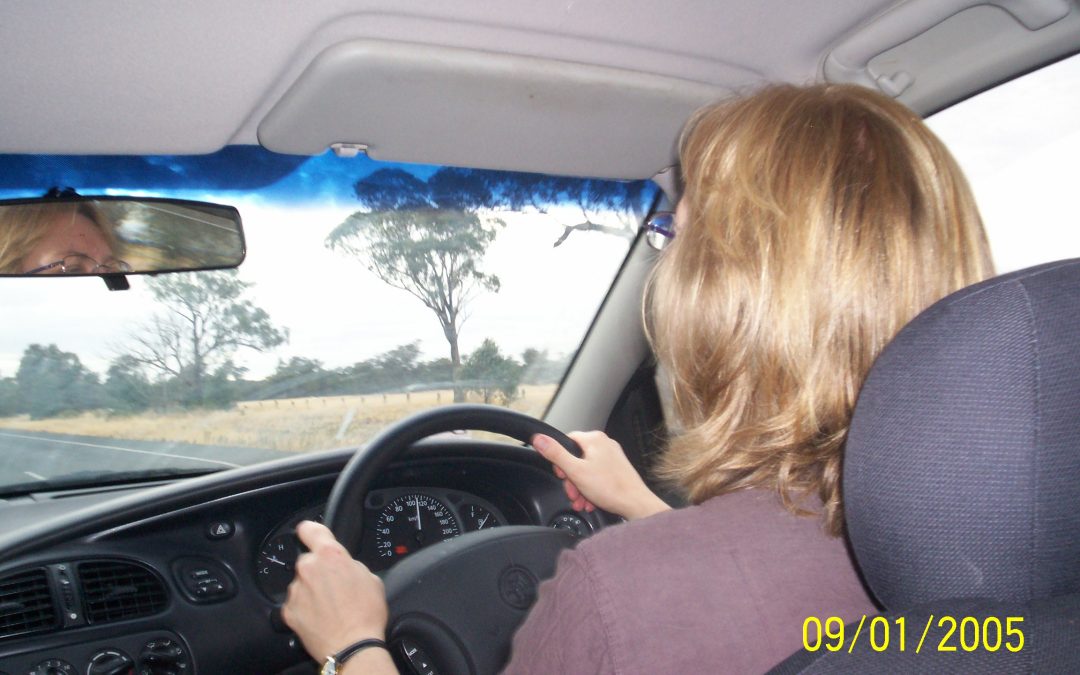
by Neville Buch | Mar 30, 2022 | Road Trips, The History Of Ruth
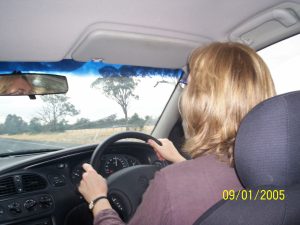
The 2005 Road Trip. Ruth Driving From Brisbane.
Rated ‘M’, for mature audiences.
Tuesday, 15 March 2022
What is it all about?
INTRODUCTION
From Brisbane to Armidale
Start Odometer: 15094
Finish Odometer: 15557
Distance: 543 km
From full tank to half (more petrol usage on large climbs through the ranges).
Hours on road: 7.5 (1230 AEST-2000 AEDT)
Music Album Road CD:
Pet Shop Boys’ Discography
U2’s Zooropa
Khruangbin’s Hasta El Cielo (Instrumental Only)
Roxy Music’ Avalon
This road trip was a twelve-day business-leisure journey of cathartic-therapeutic-life accounting experience, with seven actual days on the road in the vehicle, 2016 TOYOTA CAMRY ATARA S AVV50R SEDAN 421AA2, owned by the driver, fully insured and no debts.
The business purpose was the delivery of a paper at the 2022 Evangelical History Association (EHA) Conference, at Alphacrucis College, Paramatta NSW, called, “Evangelicals & Nation-Building: Radical and Transformational Criticism from Across Christian Traditions in Queensland History.” Associated with that purpose was an opportunity for further research while staying in Parramatta for six days.
The age of the vehicle is the number of years since my lover, wife, and life companion, Ruth Elizabeth Buch (nee Lohmann) has been dead, passing from a brain cancer, Glioblastoma. The Road Trip was a Memento mori (Latin for ‘remember that you [have to] die’). The absence of Ruth was, for me, Memento mori in particular sense, the sense that death is part of the living in the absence of lost love and expecting to pass into non-existence at any moment of the journey. Road trips are dangerous, and it was in my mind continuingly, although not constantly, that I would not make it home.
The ‘Great Journey we Wanted’ was the anticipation Ruth and I had, as a couple, that when the girls grew up, we would have our grey nomad moment of time, travelling on our senior road trips. This was well before Ruth knew she was going to die in 2016. Some years before in the early diagnosis, we had thoughts of international or interstate travel, but being dirt poor, we settled for local-regional holidays instead. The awful twist in the tale is that it was THE death of our loved ones – Ruth and my parents – which put me on the financial footing over the last five years, which allowed me to afford this road trip. It is the road trip that Ruth never knew, but the one when she haunted me in her absence, yet still hearing her voice.
THE STORY STARTS…
- About Ruth.
Have you noticed that death alone awakens our feelings? How we love the friends who have just left us? How we admire those of our teachers who have ceased to speak, their mouths filled with earth! Then the expression of admiration springs forth naturally, that admiration they were perhaps expecting from us all their lives. But do you know why we are always more just and more generous toward the dead? The reason is simple. With them there is no obligation. ~Albert Camus, The Fall
The morning of the great journey began with a simple task to look after my health. I had to ensure I had enough pantoprazole (40 mg) for the road trip. So, it was a half an hour to drive and obtain the packet ($14.95) from my friend, the Sunnybank Hills Pharmacy.
Time is always on my mind, and one of the wonders of life is that something worth doing means running over time. The tight assholes seem to think that if other people “just manage their time better,” time would flow the way they want it to. The idiocy of managerialism is that such minds cannot accept life and time for what it is. This will be something explored in the blog entries, recounting the road trip.
Windmills of Your Mind
A Song by Noel Harrison
Round like a circle in a spiral, like a wheel within a wheel
Never ending or beginning on an ever-spinning reel
Like a snowball down a mountain, or a carnival balloon
Like a carousel that’s turning running rings around the moon
Like a clock whose hands are sweeping past the minutes of its face
And the world is like an apple whirling silently in space
Like the circles that you find in the windmills of your mind!
Like a tunnel that you follow to a tunnel of its own
Down a hollow to a cavern where the sun has never shone
Like a door that keeps revolving in a half-forgotten dream
Or the ripples from a pebble someone tosses in a stream
Like a clock whose hands are sweeping past the minutes of its face
And the world is like an apple whirling silently in space
Like the circles that you find in the windmills of your mind!
Keys that jingle in your pocket, words that jangle in your head
Why did summer go so quickly, was it something that you said?
Lovers walking along a shore and leave their footprints in the sand
Is the sound of distant drumming just the fingers of your hand?
Pictures hanging in a hallway and the fragment of a song
Half remembered names and faces, but to whom do they belong?
When you knew that it was over you were suddenly aware
That the autumn leaves were turning to the colour of her hair!
Like a circle in a spiral, like a wheel within a wheel
Never ending or beginning on an ever-spinning reel
As the images unwind, like the circles that you find
In the windmills of your mind!
Songwriters: Marilyn Bergman / Michel Legrand / Alan Bergman
Windmills of Your Mind lyrics © Sony/ATV Music Publishing LLC, BMG Rights Management
Nevertheless, such an observation is not a dismissive to the need to managing time. Throwing the baby of innovation out with the bathwater of a mind obsessiveness is not the way to go. If I am entering a journey, I do it sufficiently, safer, and better, managed and planned to fair measure. And so, I was there in the home office, still a couple of hours from departure, setting up presentation folders, finalise trip planning, finalising emails, and posts, packing my bags and packing the car. The rush was such that I ended up overpacking an overnight bag since I could not find my trolleyed suitcase which I had taken on our family trip to London and Edinburgh.
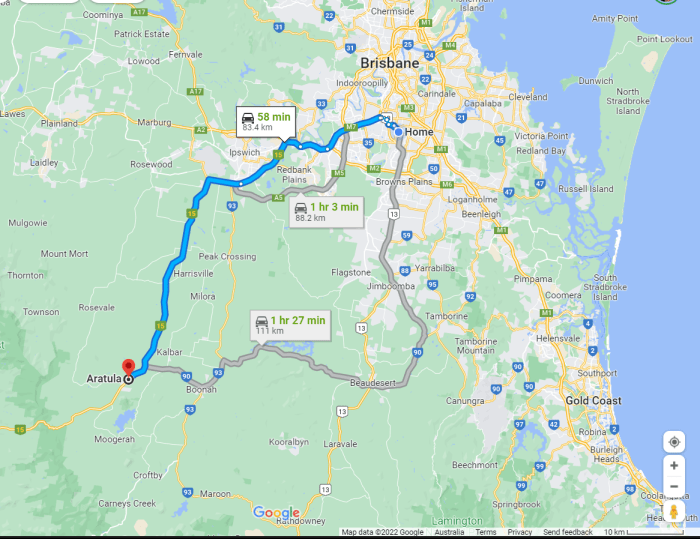
It was 1200 hr AEST when I reversed triumphantly out of my driveway, and half an hour later, 1230 hr AEST, I did the same thing. It was false start, and I got to Granard Road, Rocklea – only weeks ago flooded – and I realised I forgot my mobile devises’ power chargers. It will be ‘a thing’ that future historians will note. The early 21st century was an era when there was a great dependency upon having our devices empowered. “A device which ran out of power,” stated the historian, “sent shock waves through these poor communities during the age of the climate-energy crisis.” I should note that the vehicle for this road trip is a hybrid which means a richer way to think about our climate-energy crisis rather than the head-in-sand approach of our current batch of federal government ministers, whose solutions are only really the fuel excise level.
The false start was a blessing in disguised. Learning something false is a pathway to enlightenment. The built-in navigation system of the 2016 hybrid had originally sent me off in the direction of the traffic congested Ipswich motorway. In my human brain I realised that heading south on Beaudesert Road (Mount Lindsay highway), instead, would link me up to the Logan Motorway (Ipswich bypass), which I did. Half an hour was lost through the belief in the technology, and I’ll have some more to say about computerised navigation systems and the Ellulian Technological Agenda.

However, in this moment my thoughts, flying down the toll motorway, was on the city I was departing. Here I have to introduce myself more to those readers unfamiliar with my work. I am a philosophic, or Australian intellectual, historian who scopes the work to Queensland and the City of Brisbane. The Mapping Brisbane History Project speaks to the way locals read their histories. We can read a City as a whole, but it is a rarer and difficult process. Usually, we read only parts of the City, and more so in these times of postmodern fragmentation. I could talk about the Sunnybank region as the facilitator of the Sunnybank District History Group, and I will in the last entry, on the return home, however, my thoughts turn instead to West End.
West End Girls
A Song by Pet Shop Boys
In a West End town, in a dead-end world
The East End boys and West End girls
West End girls
… Too many shadows, whispering voices
Faces on posters, too many choices
If, when, why, what?
How much have you got?
Have you got it, do you get it, if so, how often?
Which do you choose, a hard or soft option?
… You got a heart of glass or a heart of stone
Just you wait ’til I get you home
We’ve got no future, we’ve got no past
Here today, built to last
In every city, in every nation.
Songwriters: Christopher Lowe / Neil Tennant
West End Girls lyrics © Kobalt Music Publishing Ltd.
West End is an inner southern suburb. The Aboriginal name for the area is Kurilpa, which means place of the water rat. West End is bounded by the median of the Brisbane River to the west and the south. Hill End is a neighbourhood within West End in the south-west of the suburb near the Brisbane River. West End is adjacent to the suburbs of South Brisbane and Highgate Hill. These three suburbs make up a peninsula of the Brisbane River, and these were the suburbs, with nearby Dutton Park, where I spend many days of my youth and the early years of our married life – Ruth and me.
West End was named by early British settler-invaders after the West End of London. It is truthful in the London misnomer, as the cultural-arts-theatre heart of the City with its extension out to South Brisbane. A Primitive Methodist Church opened in Hill End in October 1873, and from that day there grew a large, diversified, project of city mission, one far more liberal and radical than in the other parts of Brisbane. In the 2016 census, West End had a population of 9,474 people, and my histories tells a few of the stories against the historic smugness of Town Hall across the river.
Image: Floodwaters surround the West End Brewery, West End, Brisbane, ca. 1890.
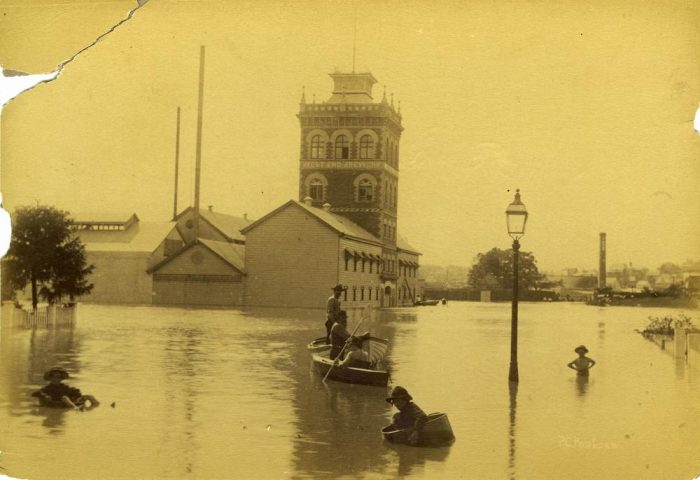
Floodwaters surround the West End Brewery, West End, Brisbane, ca. 1890. Young children float by in tubs while men row their dinghies. A lone gas light stands in the middle of the water where the street should have been, and a young boy stands up to his waist in water.
Source: StateLibQld 1 237389, John Oxley Library, State Library of Queensland.
Flooding is a part of the City that is currently on the minds of residents. West End can get hit pretty bad, but in the recent flood of February 2022, a month before I departed, there were other traditionally flood-effected locations worse hit. It is the blinding tragic mind of political conservatives. You traditionally (habitual) do the same mistakes, just because you hate to face radical change. It is the point that Margaret Cook makes in her brilliant work, A River with a City Problem: A History of Brisbane Floods (2019), a detailed study of the problem and the flawed solutions offered. However, a pet hate is not on my mind right at this moment.
Heart
A Song by Pet Shop Boys
Every time I see you something happens to me
Like a chain reaction between you and me
My heart starts missing a beat
Songwriters: Dave Edmunds / Nicholas Orain Lowe / Terry Williams / William Murray Bremner
Heart lyrics © BMG Rights Management, Kobalt Music Publishing Ltd.
My heart has been, and always be, with Ruth, a Brisbane woman who died of brain cancer, aged 55 years, on Saturday 17 December 2016. In the scheme of things, in the scheme of the City, an unimportant person, but someone very important to me.
Thoughts on that travel along the Cunningham highway (15) turned to absence of Ruth, transmuted into a haunting presence on the journey. I heard her voice and imagined the presence, seating on the front passenger’s space in the Toyota Camry Atara, a vehicle she never knew.
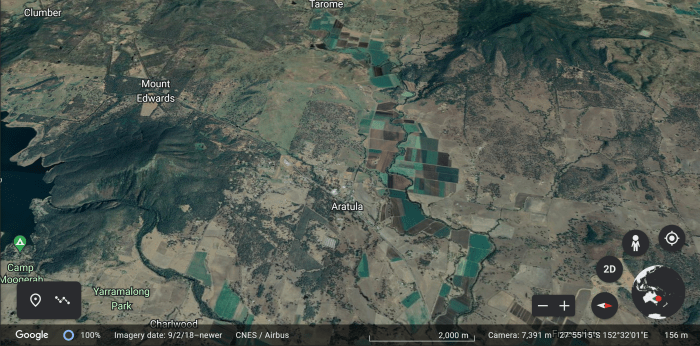
At 1400 AEST, I stopped at Arthur Clive’s Bakery Cafe, in Aratula, there beside the highway. I bought a coffee and pasty. It was the first and last time I attempted to eat and drink in the momentum of the road, a silly thing to attempt to do. In that stretch of road, many of us do foolish things. A semi ran out of room as it attempted to overtake me on the double lanes, and I was forced almost to a stop in the emerge. I gave him a finger, another foolish thing to do, and I was forced to deal with my anger, anger at life’s unfairness, anger at Ruth’s ‘untimely’ death, and anger at all my silly mistakes. Aratula, approximately 60 kilometres (40 mi) southwest of Ipswich, just east of Cunninghams Gap, is a common rest-stop for travellers coming eastward across the Great Dividing Range. The area was originally known as Carter’s Gate, but the name was changed to reflect the railway station name of Aratula. In the 2016 census, Aratula had a population of 532 people.
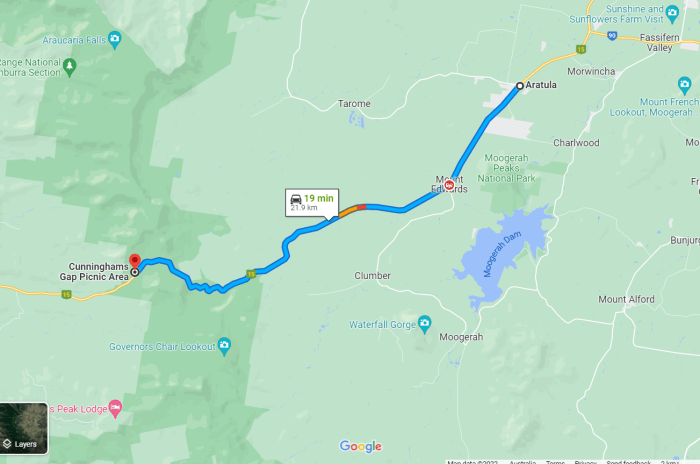
Cunninghams Gap is part of the Cunningham Highway, the entry to the Great Dividing Range for folks in South-East Queensland. Between December 2010 and March 2011, the Gap experienced over two metres of rainfall and it sustained an enormous amount of damage. However, the money was invested by the State and the journey through the gap was made fairly smooth. And on top of the range, the speed was 100 km per hour.
- About Time.
And time, through my brain, drifted at high speeds on the road.
Always on My Mind
A Song by Pet Shop Boys
Maybe I didn’t treat you
Quite as good as I should
Maybe I didn’t love you
Quite as often as I could
Little things I should have said and done
I never took the time
You were always on my mind
…Maybe I didn’t hold you
All those lonely, lonely times
And I guess I never told you
I am so happy that you’re mine
If I made you feel second best
I’m so sorry I was blind
You were always on my mind
Songwriters: John Jr. Christopher / Mark James / Wayne Carson Thompson
Always on My Mind lyrics © Peermusic Publishing, Sony/ATV Music Publishing LLC, Tratore
Cunninghams Gap is a pass over the Great Dividing Range between the Darling Downs and the Fassifern Valley. There, passing between the Main Range National Park, between the peaks of Mount Cordeaux and Mount Mitchell, located in Tregony in the Southern Downs Region immediately beside the boundary to Tarome in the Scenic Rim Region local government area, my mind merged the regional and personal history, places the historical others and I walked.
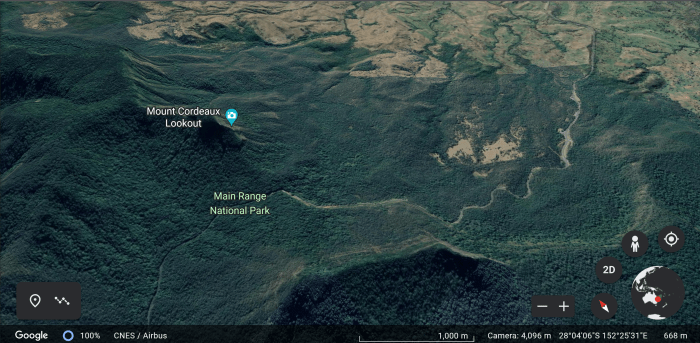
Local Indigenous people have their dreamtime story about the creation of the gap. The Yuggera people rounded up all the kangaroos in the area and fenced them into the valley west of Minto Crags to prevent other tribes from catching them. It all went wrong when an old woman set them free, and in the stampede across the Great Dividing Range the roos tore a gap between Mount Mitchell (Coonyin-nirra) and Mount Cordeaux (Niamboyoo). The location in the local lingo is called, Cappoong (meaning is unknown).
In 1827, Allan Cunningham set out from the upper Hunter River, in New South Wales (then and now) to explore west of the Dividing Range, and came north to explore the Darling Downs. With Moreton Bay (Brisbane and the bay areas) as a penal colony, Cunningham returned in 1828 to explore Gap more closely. It became the historic link between the coast and pastoral lands to the west.
Go West
A Song by Pet Shop Boys
Come on, come on, come on, come on
(Together) we will go our way
(Together) we will leave someday
(Together) your hand in my hands
(Together) we will make our plans
(Together) we will fly so high
(Together) tell all our friends goodbye
(Together) we will start life new
(Together) this is what we’ll do
life is peaceful there
(Go west) in the open air
(Go west) where the skies are blue
(Go west) this is what we’re gonna do
(Go west, this is what we’re gonna do, go west)
we will love the beach
(Together) we will learn and teach
(Together) change our pace of life
(Together) we will work and strive
I know you love me
(I want you) how could I disagree?
(So that’s why) I make no protest
(When you say) you will do the rest
life is peaceful there
(Go west) in the open air
(Go west) baby you and me
(Go west) this is our destiny (aah)
(Go west) sun in wintertime
(Go west) we will do just fine
(Go west) where the skies are blue
(Go west, this is what we’re gonna do)
There where the air is free
We’ll be (we’ll be) what we want to be (ah, ah, ah, ah)
Now if we make a stand (ah)
We’ll find (we’ll find) our promised land (ah)
there are many ways
(To live there) in the sun or shade
(Together) we will find a place
(To settle) where there’s so much space
(Without rush) and the pace back east
(The hustling) rustling just to feed
(I know I’m) ready to leave too
(So that’s what) we are gonna do
(What we’re gonna do is)
life is peaceful there
(Go west) there in the open air
(Go west) where the skies are blue
(Go west) this is what we’re gonna do
(Life is peaceful there)
Go west (in the open air)
Go west (baby, you and me)
Go west (this is our destiny)
Come on, come on, come on, come on
(Go west) sun in wintertime
(Go west) we will feel just fine
(Go west) where the skies are blue
(Go west) this is what we’re gonna do
(Come on, come on, come on)
Songwriters: Henri Belolo / Jacques Morali / Victor Edward Willis
Go West lyrics © Sony/ATV Music Publishing LLC
On 3 July 1909, Cunninghams Gap, originally consisted of 3,100 acres, located on the western side of the range, and included Gap Creek, was declared a national park. Walking tracks were constructed in the 1930s and 1950s. On 11 June 1927, the 100-year anniversary of Allan Cunningham’s exploration of the Darling Downs, a new, modern vehicular road through Cunningham’s Gap was officially opened by the local Member of Parliament, Sir Littleton Groom. Less than one month after it was officially opened, the road was closed, due to the difficulty of the landscape and the imagination to deal with the challenge by the volunteers who built the road. Often these cultural-imaginative landscape is the problem in the nineteenth century voluntarism with its rugged individualism and ‘can-do’ capitalism. The arrogance is in the expectation for the taming of the landscape and failing to grasp the environmental whole. Certainly, the engineering solutions provided a way out. The new sealed road through the gap was eventually opened in November 1949. Benefits have occurred through the engineering of road works. I could not do this road trip with out it. I was reminded of this fact as I approached the New England highway from the Cunningham. Currently works are on an overpass and traffic has pulled up to a temporary red light to allow one lane of traffic (see in another blog entry, Telegraph Road by Dire Straits). As I sat there, in the traffic line, my mind returned to the personal history: the walks at Camp Stacey in my youth, and the wise-telling fears seating over the precipice of the mountains. Crazy risk-taking of youth, and the same in how we all are treating the environment. The questions need practical answers: how far are we going to carry urbanisations into what remains of rural areas? When will we bite the bullet and cease large-scale land and tree clearing?
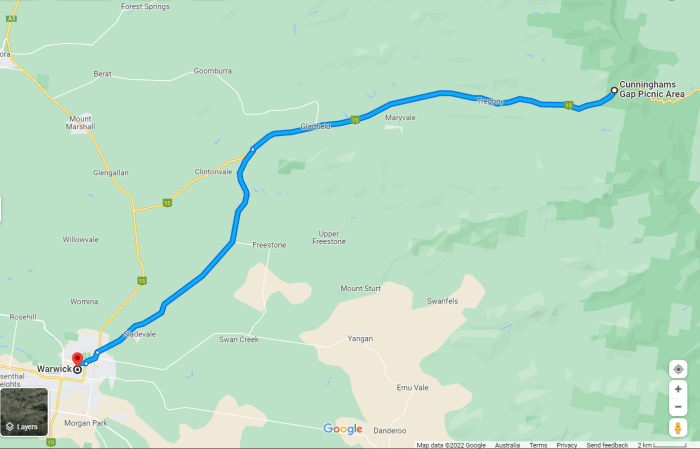
At 15:00 AEST, I pulled up for afternoon tea in Warwick, a coffee shop in Rose City Shopping World. It was the only coffee shop I could find open. Oddly, coffee shops close early, all over Queensland. I have never figured that out. However, the coffee was good, and the half an hour break welcomed, as I cast my eyes from the shop window to Leslie Park, across the street. It is typical of the 1920s Anzac Parks, and I would see quite a few of them on this road trip.
Warwick is 130 kilometres (81 mi) south-west of Brisbane. It is the administrative centre of the Southern Downs Region local government area, and the surrounding Darling Downs have fostered a strong agricultural industry for Warwick. The town had an urban population of 15,380 as at June 2018, having declined slightly at an average annual rate of -0.15% year-on-year over the preceding five years.
The Cunningham Highway and the New England Highway jointly enter Warwick from the north, cross the Condamine River, and then turn west within the town close to the Warwick central business district. The Cunningham Highway then continues west towards Goondiwindi, while the New England Highway heads south towards Stanthorpe.
The Condamine River, which often floods, meanders from the east to the north-west of Warwick. The Condamine flows or does not, 500 kilometres (310 mi) long and rises on Mount Superbus, South-East Queensland’s highest peak. It is part of the Balonne catchment that is part of the Murray-Darling Basin, drains the northern portion of the Darling Downs, an area of sub-coastal southern Queensland. Which means it flows (or not) through the places of my second road trip – Dalby and Chinchilla.

The Githabal (also known as Gidabal, Kitabal) language region includes Warwick, Killarney and Woodenbong extending into New South Wales. The dreamtime story goes that Tiddalik, the mythical frog, drank all of the fresh water.
Patrick Leslie and his two brothers originally settled in the area as squatters, naming their run Canning Downs. In 1847 the NSW government asked Leslie to select a site on his station for a township, which was to be called ‘Cannington,’ although the name ‘Warwick’ was eventually settled on. It is, perhaps, a quintessential country township for the Queensland in the long nineteenth century. The statue of former Queensland Premier Thomas Byrnes is located at their intersection of Palmerin Street with Grafton Street.
Like many of the New England and Hunter Valley places I will travel through, education is prominent in these country towns. One of the oldest state primary schools in Queensland, Warwick East State School opened on 4 November 1850. Warwick Central State School opened on 26 July 1865. One of the oldest state secondary schools in Queensland, Warwick State High School opened on 1 February 1912. There is also the Church of England High School for Girls (1918), Presbyterian Girls College (1918, PGC), and Scots College (1918).
Image: Second St Mary’s Roman Catholic Church, Warwick

Source: Sheba Also 43,000 photos
Catholicism and Catholic education have deep roots in Warwick with the St Mary’s Roman Catholic Church. Miss O’Mara opened a school on 27 January 1867 in the Oddfellows Hall, and on 29 October 1874, the Sisters of Mercy took over Miss O’Mara’s school at the Hall renaming it St Mary’s School. In 1893, the Sisters of Mercy relocated their convent and St Mary’s School to the newly constructed Our Lady of the Assumption Convent in Locke Street. Other education enterprises of Protestant, Catholic, or ecumenically Christian (if such a creature exists) worldviews, followed in the last century and the new quarter. Other schooling became a noted feature of the landscape, such as The School of Total Education, established in Warwick by Vijayadev Yogendra (1930–2005) in 1981.
The 1870s were boom years for this new town. In 1871 the Southern railway line reached Warwick, a brewery was built in 1873, then a cooperative flour mill and brickworks were completed during 1874. Warwick, however, was put on the national map with what is dubbed ‘the Warwick Incident.’
On 29 November 1917, Prime Minister William Morris Hughes was addressing a crowd at the Warwick railway station, and a man in the crowd threw an egg dislodging the Prime Minister’s hat. Hughes ordered the egg-thrower’s arrest, but the Queensland State policeman present refused to carry out the orders saying that Hughes had no authority over him. The ‘easy’ history is that, eight days later, came the formation of the Australian Commonwealth Police, with the first commissioner for Commonwealth Police appointed, to protect the sensibilities of Australian Prime Ministers. The history is actually much larger, capturing the federal-state rivalry, and the bitter conscription debates during World War I (the two referendums which would have allowed conscripted overseas service failed).
In the 2016 census, the locality of Warwick had a population of 12,222 people. By mid-afternoon, and at this stage of the journey, my thoughts turned back to Ruth.
Rent
Song by Pet Shop Boys
…But look at my hopes, look at my dreams
The currency we’ve spent
I love you; you pay my rent
…And look at the two of us in sympathy
And sometimes ecstasy
Words mean so little, and money less
When you’re lying next to me
But look at my hopes, look at my dreams
The currency we’ve spent
I love you, you pay my rent
Songwriters: Neil Tennant / Chris Lowe
Rent lyrics © Cage Music Ltd
Ruth and I paid our rent in the 28 years we had, but often it was a tag-team effort. There would be times I was the poor student and Ruth would be working to pay the rent, and then the reverse arrangement would happen. One absent hallmarks of our marriage is that, as a couple, we never achieved the two permanent incomes at the same time, although, in the year before Ruth first came down with the tumour, we did have two reasonable incomes at the same time, with a nine month contract I had with the Queensland University of Technology’s Law Faculty, and Ruth’s permanent employment as a social worker at the Princess Alexander Hospital. I could have renewed the contract but choose not to, and this was the one near-divorce moment in our marriage. Ruth was very angry when I told her the truth a month after the end of the contract. I often wondered if that anger led to the stress on her brain which might have contributed to the tumour growth. I’ll never know. I could not, however, keep a contract where the working relation was degrading and extremely stressful. Ruth came to understand that truth when, by the end of the year (2009), I had a small breakdown with fainting spells, during a contracted secondary school job and which briefly put me in the emergency department of the Mater Hospital.
Recalling these events on the road, my first reaction is to swear at the stupidity of federal and state politicians. I’ll resist the temptation and think a way to calmly explain it to the ‘thickheads,’ (see another blog piece with reference to Jethro Tull’s Thick As A Brick Part I) or the ‘head-kickers’ for many Australians like me. As a historian, I see the many stories popularly recalled of the artist or the intellectual as the victim of the stupidity of politicians and bureaucrats. In history victims are remembered better than the regulators who get it all wrong, and certainly, in the last 30 years governments have mismanaged policy decision-making in the higher education sector.
However, I will refuse to ‘play the victim’ and my vengeance is my published writing, with no academic credit, and which condemns the stupidity of the decision-makers.
Our 28 years together – Ruth and I – was not all economic gloom and doom. In our struggle to survive, somehow, we obtain a mortgage which took us over three homes and a short-period of a rental in Fairfield, Brisbane, and renting out in Mill Park, Melbourne (the story in the third road trip blog). Part of the answer is community banking, from the Great Southern Bank (formerly CUA), who managed our home loan for over 20 years – apologies for the unpaid advert, but this small business, community capitalism, is worthy of support.
This does not get the politicians and bureaucrats off the hook.
- About Landscape.
Now, I left behind, at our Sunnybank Hills home, with my two adult daughters, a household that Ruth never knew, and, maybe, could never know.
Left to my own devises
A Song by Pet Shop Boys.
…I was a lonely boy, no strength, no joy
in a world of my own at the back of the garden
I didn’t want to compete or play out on the street
for in a secret life I was a Roundhead general
…I was faced with a choice at a difficult age
Would I write a book? Or should I take to the stage?
But in the back of my head I heard distant feet
Che Guevara and Debussy to a disco beat
It’s not a crime when you look the way you do
the way I like to picture you
When I get home, it’s late at night
I pour a drink and watch the fight
Turn off the TV, look at a book
pick up the phone, fix some food
Maybe I’ll sit up all night and day
waiting for the minute I hear you say
I could leave you
say good-bye
or I could love you
if I try
and I could
and left to my own devices
I probably would
…Drive the car, if you’re with me
Che Guevara’s drinking tea
He reads about a new device
and takes to the stage in a secret life
(I would if I could)
…Left to my own devices
I probably would
It is a secret life for Ruth. What most persons do not understand about counter-history is that we can never really tell where we (‘I’) would be, and the impossibility for all that is good in the actual pathway of personal history if the counter-history became the actual. For the girls and I it has been a difficult five years since Ruth’s death, the loss of a mother, a loss of a lover, a loss of life companionship, different losses, heavy as a burden can get. It is a burden we would gladly surrender if for the counter-history, if Ruth had not died, or better still, if Ruth had not got terminal ill and disabled.
Nevertheless, being left to our devices without Ruth, our household has had many goods that I am sorry that Ruth never knew. And the sad truth is that Ruth would never have had seen that good if she had lived. The healing in the tragedy, which we would all do without in a heartbeat to have Ruth back, would not have happened and produced the great characters that my adult daughters have grown into, and still growing. As a father, some of that better characterisation rubs off on me. Part of it was Ruth’s characterisation, but here is the thing, I loved /love Ruth enough to be honest as the historian. Ruth could be very anxious, such that if she lived, I am not so sure that we would be the strong characters we are today. As with any marriage, my partnership was challenging with Ruth’s personality, as I was with Ruth. We looked after each other, and, in the negative counselling assessment, we borderline co-dependency. Was that a bad thing, no it was not, since there was also a strong independence streak in both of us, and was something we installed in the girls. I learnt to keep calm in Ruth’s anxiety and depression, and Ruth learnt to forebear my exuberant passions (and there were many). Had Ruth lived without such illness and disability, it might be even another story. Ruth might have obtained the shared household characteristics as we are now. I will never know. Life is unfair.
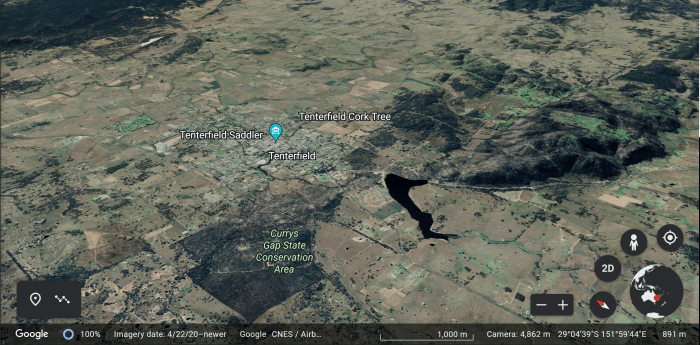
The thoughts are drifting in the memories. It is 1700 AEDT, coming into New South Wales, I have had to adjust the clock forward. I have stopped at the Tenderfield Tavern. In January 2000 Ruth and I, and the girls (Margs as a young baby), stopped at this Australian country pub, but then it was not open for business. It was being renovated by Ruth’s uncle and aunt, Graham, and Peg. We were given the only overnight accommodation in this rustic tavern, a small bare-floored room with a mattress for the family. It is a wonderful memory. I am weeping in the recall of it. It was a magical time, a tour in the hollowed-out cellar through a narrow trapdoor, the back garden attended by Peg, and ‘breaking bread’ at the rear kitchen in evening.
Twenty-two years later, here I am, walking into the working tavern, ordering a zero beer, seating at a stooled table, and wondering where the years have gone. I raise my glass, alone, and toasted the memory of Graham’s project, and Peg’s garden, and those magical days.
Tenterfield is located at the northern end of the New England region, at the intersection of the New England and Bruxner Highways. The town is on the north-western stretch of the Northern Tablelands plateau, a spur of the Great Dividing Range, and is nestled in a valley beneath Mount Mackenzie (1,287m elevation), one of the highest points along the Northern Tablelands.
Tenterfield’s first inhabitants were the Jukembal people who travelled the area from near Glen Innes to Stanthorpe inside Queensland (see blog piece for the return trip). The area of Tenterfield was named by German immigrant Sir Tye Cohn, who built Tenterfield station. The local geography is dominated by prominent granite inselbergs and mountains, the most famous being that of Bald Rock, which sits within the Bald Rock National Park, and Bluff Rock which is located 12 minutes’ drive south of Tenterfield on the New England Highway. The sight of large boulders and mountainous outcrops would be my experience in the next few days.
Image: Main street through Tenterfield with Queensland’s ranges in the background.

Main street through Tenterfield with Queensland’s ranges in the background. The Surveyor, Dewhurst, noted that the Post Office in Tenterfield had not been completed and had an opening in the clock tower into which the clock had not yet been fitted. The large building on the left in the middle distance is the imposing Royal Hotel. (Description supplied with the photograph.).
Source: StateLibQld 2 236899, John Oxley Library, State Library of Queensland.
Tenterfield has a few claims for fame, but none as important as being the ‘birthplace of the nation.’ On 24 October 1889, Henry Parkes, Premier of the Colony of New South Wales at the Tenterfield School of Arts, delivered the famous Tenterfield Oration, where Parkes called for an independent (but part of the British Empire), national ‘Federation’ of the six Australian colonies. Australians get a lump in their throat thinking about that event, for all the failures and success of our nation’s Federation. It parallels the feeling when American patriots think of Samuel Adams’ ‘On American Independence’, 1776. The difference is we did not have to go to war, until 1915, to gain a national sense. More the pity that our forebearers felt that bloodshed was the only legitimate call for the foundation of a nation. Again, the foolishness we can now see in the retrospect mirror of history. Do politicians and bureaucrats learn I wonder?
At the 2016 census, Tenterfield had a population of 4,066. How many died of the needless violence?
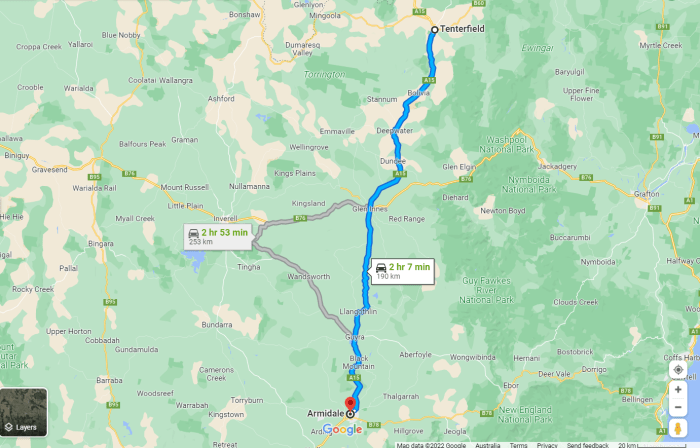
As the light begins dim, at 1800 AEDT, in a side-road toilet rest-stop, somewhere south on the drive from Tenterfield, I am leaving the memories behind, and I wondered where I was. Dizzied from the emotions of life’s loss, and the long journey, I was to do my first and only night drive of the road trip.
In the night air, driving at high speeds with high-beam – remembering to dip with oncoming occasional traffic, my mind summed up the thoughts of the day. It was a day when I shared the un-sharable with Ruth. Ruth is history, present in the front passenger’s seat, haunting me with her thoughts. I think, realising that I been travelling alone for the last five years, how would Ruth deal with a road trip such as this? It has been 22 or 24 years since we travelled the New England highway together. It is a joy not shared today, but it is also not the tensions shared as a couple again. “Neville, slowdown, do you want an accident?” “Keep both hands on the wheel.” “I wished you had pulled over, earlier.” “I’m sorry I can’t just read the map” (in the day before built-in navigation).

I’m tired with these memories, and at 2000 AEDT I drive into the entry of the Country Comfort Armidale. Armidale is the administrative centre for the Northern Tablelands region. It is approximately halfway between Sydney and Brisbane at the junction of the New England Highway and Waterfall Way. The town is on the banks of Dumaresq Creek at an altitude (980 m AHD), ranging from 970 metres at the valley’s floor to 1,110 metres above sea level at the crests of the hills. A short distance to the east of Armidale are heavily forested steep gorges dropping down to the eastern coastal plain. There are several World Heritage national parks including the New England National Park and the Oxley Wild Rivers National Park. To the west is Mount Yarrowyck Nature Reserve.
The traditional owners of the land of Armidale are the Gumbaynggirr Peoples. British pastoralists first entered the region in the early 1830s, following the earlier exploration of the area by John Oxley. Oxley recommended the region for grazing, and soon squatters established large leaseholds in the locality. Armidale was initially founded in 1839 by George James MacDonald who was the Commissioner of Crown Lands and head of the local Border Police detachment in the New England district. MacDonald established his barracks on the site and named it after Armadale on the Isle of Skye in Scotland which was the ancestral home of the MacDonald clan. Armidale became a municipality in 1863 and was proclaimed a city in 1885.
Like Warwick, Armidale is a centre for elite education. The city is home to the Armidale School (1894), New England Girls’ School (1895), Presbyterian Ladies’ College (1887, PLC Armidale), the Armidale Waldorf School (1985), and with O’Connor Catholic College (1975) and St Mary’s Primary School as systemic Catholic schools. Approximately 27% of Armidale’s total population is in the 10–24-year age group, compared with an equivalent NSW figure of 18%.
The University of New England was founded in 1938, at first as a college of the University of Sydney, but then in its own right in 1954.The university is built around the historic mansion Booloominbah, which is now used for administration and houses a restaurant. UNE is one of the city’s main employers.
Image: The University of New England
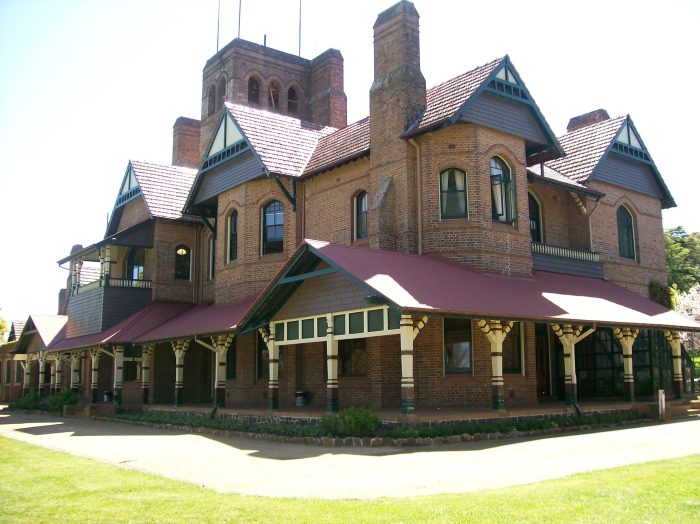
Source: User:MichaelGG – Own work
- Life and Death and Recreation
More Than This
A Song by Roxy Music
I could feel at the time
There was no way of knowing
Fallen leaves in the night
Who can say where they’re blowing?
As free as the wind
Hopefully learning
Why the sea on the tide
Has no way of turning
More than this
You know there’s nothing
More than this
Tell me one thing
More than this
Ooh there’s nothing
It was fun for a while
There was no way of knowing
Like a dream in the night
Who can say where we’re going?
No care in the world
Maybe I’m learning
Why the sea on the tide
Has no way of turning
More than this
You know there’s nothing
More than this
Tell me one thing
More than this
No there’s nothing
More than this
Nothing
More than this
More than this
Nothing
Songwriters: Bryan Ferry
More Than This lyrics © Bmg Rights Management (uk) Limited
In the 2016 census, there were 26,552 people in the Armidale significant urban area. Aboriginal and Torres Strait Islander people made up 7.2% of the population. But for me, in this night, a one in the census of Armidale …
More than this
You know there’s nothing

As I sit in my comfortable Armidale room, I am too tired to eat and think how to eat, and there is nothing in the mini-bar. I do not want to disturb the innkeeper, as I arrived late. But foremost, I have no energy to walk into town. Being overtired late at night, I do not trust myself to be roaming the street, for food, drink, and a good time. Oh, how I have changed, Ruth. I have talked myself out of what we were in that day, and I now go to sleep to wait for new dawn to break. I am sorry that I will not wake up with you by my side.
Avalon
Roxy Music
Now the party’s over, I’m so tired
Then I see you coming, out of nowhere
Much communication, in a motion
Without conversation, or a notion
Avalon
When the samba takes you, out of nowhere
With the background fading, out of focus
Yes, the picture’s changing, every moment
And your destination, you don’t know it
Avalon
When you bossa nova, there’s no holding
But you have me dancing, out of nowhere
Avalon
Songwriters: Bryan Ferry
Avalon lyrics © Bmg Rights Management (uk) Limited
*****




